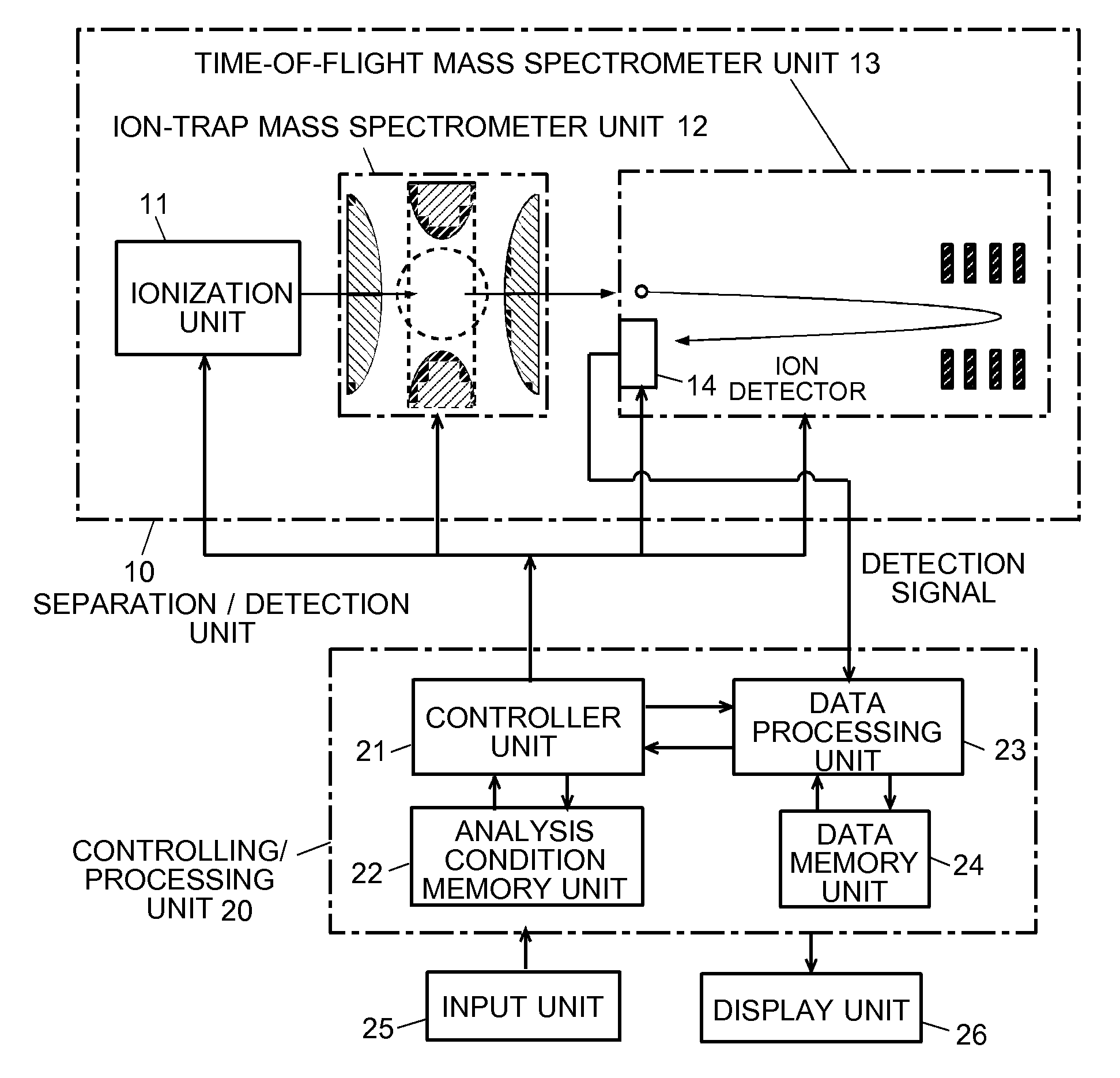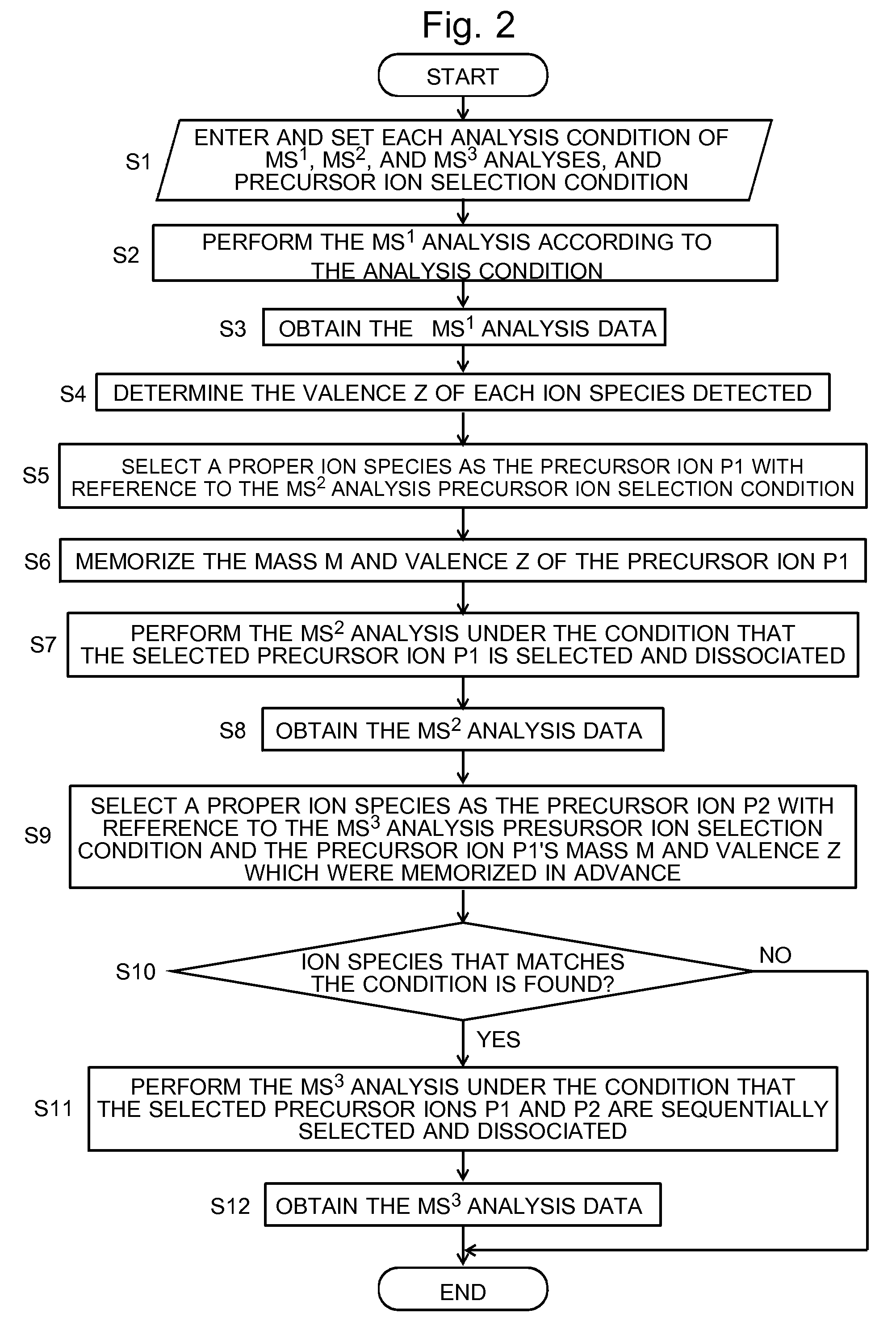Mass spectrometer
a mass spectrometer and mass spectrometer technology, applied in mass spectrometers, separation processes, instruments, etc., can solve the problems of reducing analytical efficiency, reducing accuracy, and complicated chemical structure (composition) , to achieve the effect of high accuracy
- Summary
- Abstract
- Description
- Claims
- Application Information
AI Technical Summary
Benefits of technology
Problems solved by technology
Method used
Image
Examples
Embodiment Construction
[0045]Hereinafter, as an embodiment of the mass spectrometer according to the present invention, an explanation will be made for an ion-trap time-of-flight mass spectrometer, which is a combination of an ion trap (IT) and a time-of-flight mass spectrometer (TOF-MS), with reference to FIGS. 1 through 5.
[0046]FIG. 1 is a schematic configuration diagram of the mass spectrometer according to the present embodiment. As illustrated in FIG. 1, the mass spectrometer according to the present embodiment is roughly composed of two units; a separation / detection unit 10 and a controlling / processing unit 20. The separation / detection unit 10 includes: an ionization unit 11 for ionizing a sample liquid to be analyzed whose components were separated by a liquid chromatograph for example by an electrospray ionization (ESI) method; a three-dimensional quadrupole ion-trap mass spectrometer unit 12 having a function for selecting an ion with a predetermined mass (m / z value) as a precursor ion and making...
PUM
 Login to View More
Login to View More Abstract
Description
Claims
Application Information
 Login to View More
Login to View More - R&D
- Intellectual Property
- Life Sciences
- Materials
- Tech Scout
- Unparalleled Data Quality
- Higher Quality Content
- 60% Fewer Hallucinations
Browse by: Latest US Patents, China's latest patents, Technical Efficacy Thesaurus, Application Domain, Technology Topic, Popular Technical Reports.
© 2025 PatSnap. All rights reserved.Legal|Privacy policy|Modern Slavery Act Transparency Statement|Sitemap|About US| Contact US: help@patsnap.com



